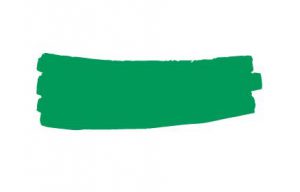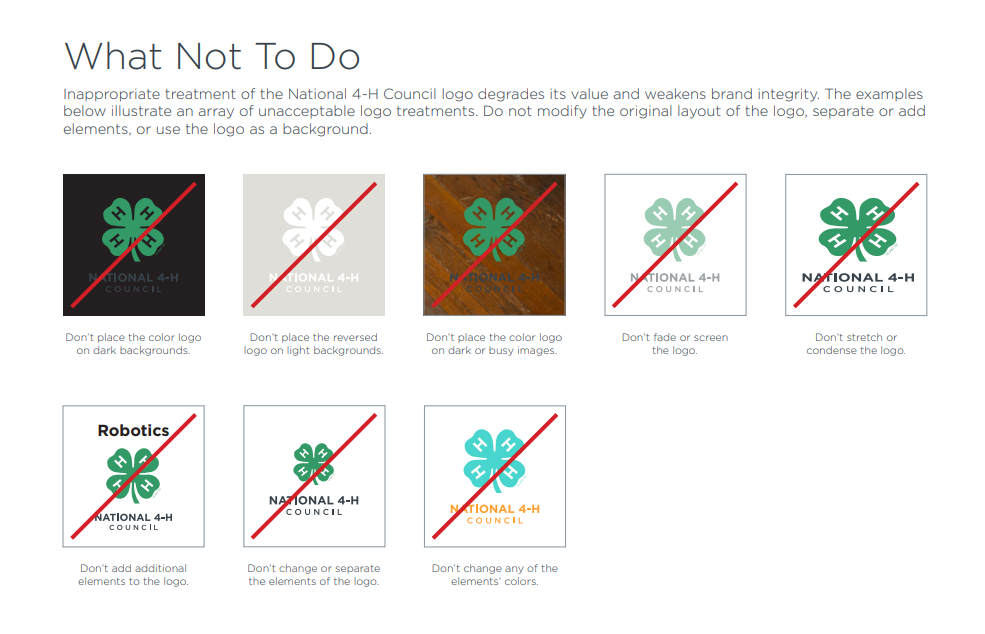Webster defines culture as the concepts, habits, skills, arts, instruments and institutions of a given people in a given place. Basically, the culture within a group is what everybody knows that everybody else knows and includes the visible expression as well as the invisible roots of the culture. Most groups have spoken or unspoken expectations for member’s behavior. These may include rules, rituals, language, demonstration of support for commonly held beliefs, etc. Youth development professionals know the importance of helping young people discover quickly the norms of the group they have joined. Each 4-H group will have a set of behavioral expectations unique to that group, and these expectations may or may not be clearly defined for all members. Here are the concepts and customs to assure that those new to 4-H and those who are already a part of 4-H have the same understanding of the basic aspects of the culture of 4-H:
What is 4-H?
![]() 4-H is non-formal, practical educational for youth in the area of life skills. It is the youth development program of the University of Florida Institute of Food and Agricultural Sciences Extension and a part of the Florida Cooperative Extension Service along with Florida A&M University. 4-H is where there’s fun in learning and learning in fun! 4-H is made up of a community of young people across the United States and internationally who are learning life skills. Our youth are supported in this developmental process by caring adult leaders. Youth that are a part of 4-H are called 4-Hers. 4-Hers are actively involved in educational projects that are fun and that use quality curriculum incorporating the most current research and knowledge available through the Land Grant University system.
4-H is non-formal, practical educational for youth in the area of life skills. It is the youth development program of the University of Florida Institute of Food and Agricultural Sciences Extension and a part of the Florida Cooperative Extension Service along with Florida A&M University. 4-H is where there’s fun in learning and learning in fun! 4-H is made up of a community of young people across the United States and internationally who are learning life skills. Our youth are supported in this developmental process by caring adult leaders. Youth that are a part of 4-H are called 4-Hers. 4-Hers are actively involved in educational projects that are fun and that use quality curriculum incorporating the most current research and knowledge available through the Land Grant University system.
4-H Colors
The 4-H colors are green and white. The white symbolizes purity and high ideals. The green symbolizes growth with nature’s most prominent color.
 4-H Pledge
4-H Pledge
 The 4-H Pledge is a statement of the outcomes desired for youth from involvement in the 4-H Youth Development program. It reminds members of the four areas of growth 4-H targets and reinforces the importance of mastery of life skills. Delegates to the 1927 National 4-H Club Camp in Washington, D.C. adopted the pledge. The phrase, “my World” was added to the pledge in 1973.
The 4-H Pledge is a statement of the outcomes desired for youth from involvement in the 4-H Youth Development program. It reminds members of the four areas of growth 4-H targets and reinforces the importance of mastery of life skills. Delegates to the 1927 National 4-H Club Camp in Washington, D.C. adopted the pledge. The phrase, “my World” was added to the pledge in 1973.
I Pledge… My Head to clearer thinking,
My Heart to greater loyalty,
My Hands to larger service, and
My Health to better living,
For My Club, My Community, My Country, and My World.
4-H Name and Emblem
 The 4-H Youth Development Program is represented by a popular, recognizable image. It consists of a green four-leaf clover with a right turned stem and the letter “H” in white or gold on each leaflet. The text, 18 U.S.C. 707, appears with the emblem. This emblem became the official 4-H emblem by an act of Congress in 1948. Use of the 4-H name or emblem signifies agreement to the principles of youth development as promoted through 4-H. The 4-H name and 4-H Clover are protected by Title 18 of the United States Code, Section 707. They have the same status and regard as the White House and Presidential Seals. Therefore, they may only be used as authorized by the statute, regulations and guidelines, and according to the authorization of the Secretary of designated representative. Specific ways to use and display the emblem (print and electronic) include:
The 4-H Youth Development Program is represented by a popular, recognizable image. It consists of a green four-leaf clover with a right turned stem and the letter “H” in white or gold on each leaflet. The text, 18 U.S.C. 707, appears with the emblem. This emblem became the official 4-H emblem by an act of Congress in 1948. Use of the 4-H name or emblem signifies agreement to the principles of youth development as promoted through 4-H. The 4-H name and 4-H Clover are protected by Title 18 of the United States Code, Section 707. They have the same status and regard as the White House and Presidential Seals. Therefore, they may only be used as authorized by the statute, regulations and guidelines, and according to the authorization of the Secretary of designated representative. Specific ways to use and display the emblem (print and electronic) include:
- Always use the specific image (outline/shape) from www.4-H.org. Do not alter the image.

Source: National 4-H Council - Green leaves (Color— PMS— 347)
- Stem to the right
- “Notice” statement, 18 U.S.S. 707 to right of stem and below lower right leaf for other location provided by USDA
- The emblem should always have a position of prominence in any design
- Do not superimpose anything over the Emblem, use it as a watermark, etc.
- When used by collaboration, the 4-H Emblem should be the same size and proportion as the other logos.
- When used electronically, the same standards as print versions should apply.
- Additional standards are available on www.4-H.org and included in the National 4-H Council Style Guide.
 0
0
